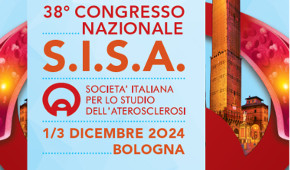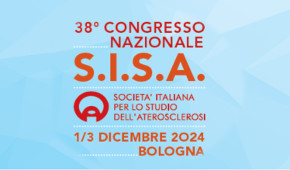 Rivista in lingua italiana
Rivista in lingua italiana
riservata ai Soci SISA
Ultimo numero:
Anno 15 • N.1/2024
Abstract
Effects of long-term exposure to air pollution on natural-cause mortality: an analysis of 22 European cohorts within the multicentre ESCAPE project. Lancet
Beelen R, Raaschou-Nielsen O, Stafoggia M et al.
Lancet 2014;383:785-95
BACKGROUND: Few studies on long-term exposure to air pollution and mortality have been reported from Europe. Within the multicentre European Study of Cohorts for Air Pollution Effects (ESCAPE), we aimed to investigate the association between natural-cause mortality and long-term exposure to several air pollutants.
METHODS: We used data from 22 European cohort studies, which created a total study population of 367,251 participants. All cohorts were general population samples, although some were restricted to one sex only. With a strictly standardised protocol, we assessed residential exposure to air pollutants as annual average concentrations of particulate matter (PM) with diameters of less than 2.5 µm (PM2.5), less than 10 µm (PM10), and between 10 µm and 2.5 µm (PMcoarse), PM2.5 absorbance, and annual average concentrations of nitrogen oxides (NO2 and NOx), with land use regression models. We also investigated two traffic intensity variables-traffic intensity on the nearest road (vehicles per day) and total traffic load on all major roads within a 100 m buffer. We did cohort-specific statistical analyses using confounder models with increasing adjustment for confounder variables, and Cox proportional hazards models with a common protocol. We obtained pooled effect estimates through a random-effects meta-analysis.
FINDINGS: The total study population consisted of 367,251 participants who contributed 5,118,039 person-years at risk (average follow-up 13.9 years), of whom 29,076 died from a natural cause during follow-up. A significantly increased hazard ratio (HR) for PM2.5 of 1.07 (95% CI 1.02-1.13) per 5 µg/m(3) was recorded. No heterogeneity was noted between individual cohort effect estimates (I(2) p value=0.95). HRs for PM2.5 remained significantly raised even when we included only participants exposed to pollutant concentrations lower than the European annual mean limit value of 25 µg/m(3) (HR 1.06, 95% CI 1.00-1.12) or below 20 µg/m(3) (1.07, 1.01-1.13).
INTERPRETATION: Long-term exposure to fine particulate air pollution was associated with natural-cause mortality, even within concentration ranges well below the present European annual mean limit value.

Area Soci
Eventi


 SISA LIPID ACADEMY - Corso avanzato di lipidologia clinica
SISA LIPID ACADEMY - Corso avanzato di lipidologia clinicaModena, 4-5 Luglio 2024
[continua a leggere]



Giornale Italiano Arteriosclerosi
HoFH today
 Rivista Italiana della
Rivista Italiana della
Ipercolesterolemia
Familiare Omozigote
Anno 5 • N.1/2023
Rivista NMCD
Diateca
[continua a leggere]
[continua a leggere]
Newsletter
il vostro indirizzo di posta elettronica
Progetto LIPIGEN

Nuovo sito dedicato al Progetto LIPIGEN
Progetto LIPIGEN - Vecchio portale
E' necessario essere loggati come utente
Lipigen per poter accedere alla pagina
PROject Statin Intolerance SISA
PROSISA – PROject Statin Intolerance SISA
E' necessario essere loggati come utente
PROSISA per poter accedere alla pagina
GILA - Lipoprotein Aferesi
Gruppo Interdisciplinare Lipoprotein Aferesi
(Accesso Gruppo GILA-Lipoprotein Aferesi)
E' necessario essere loggati come utente del Gruppo GILA per poter accedere
Gruppo Interdisciplinare Lipoprotein Aferesi
(Documentazione ad accesso libero)
Pagina informativa per medici e pazienti














